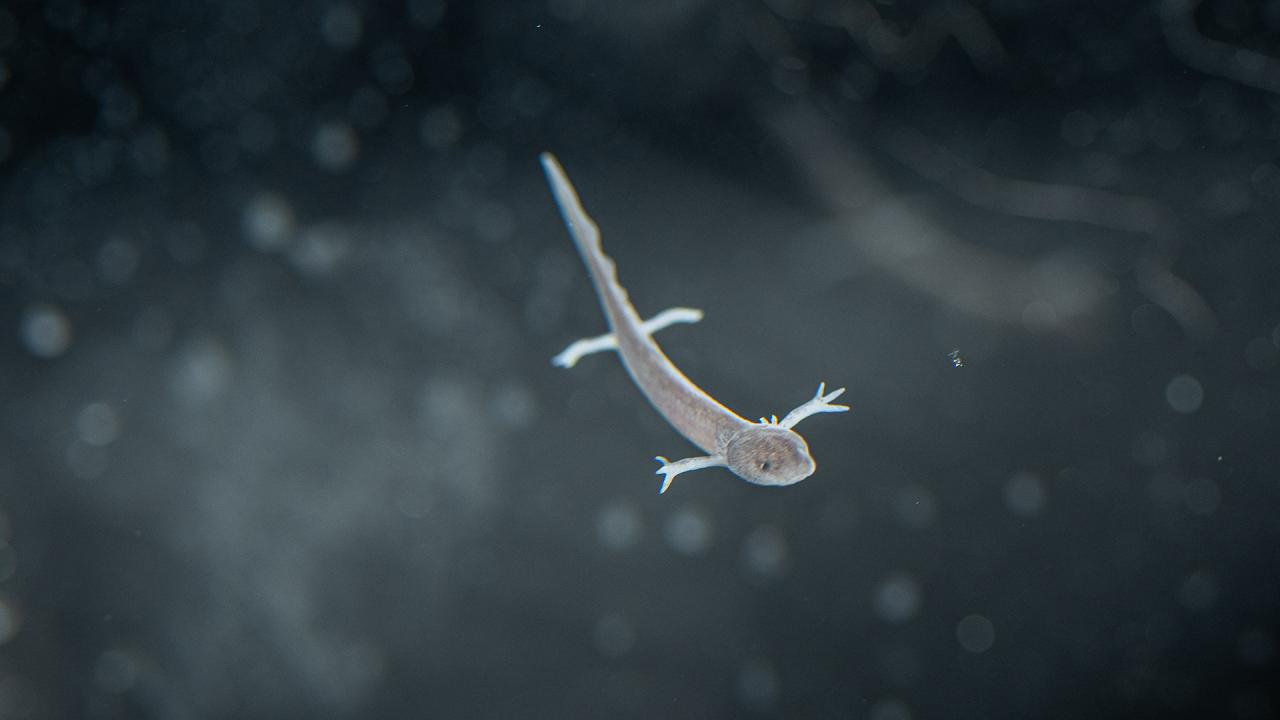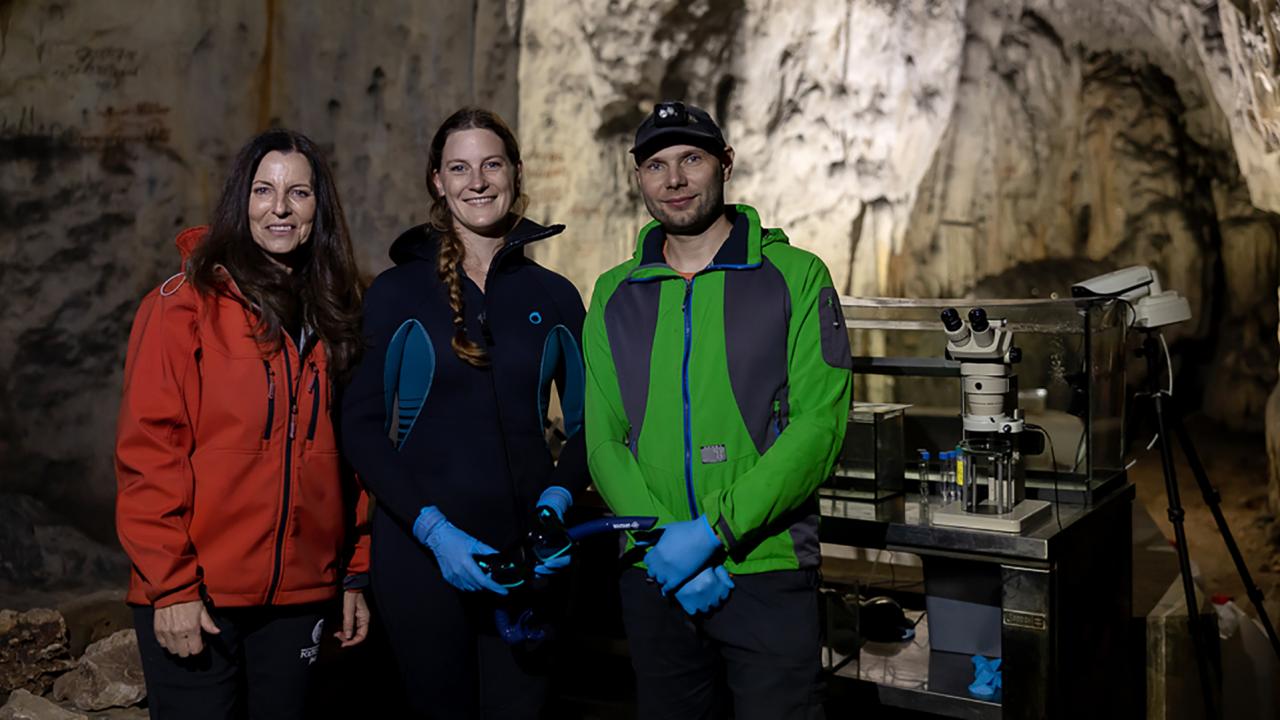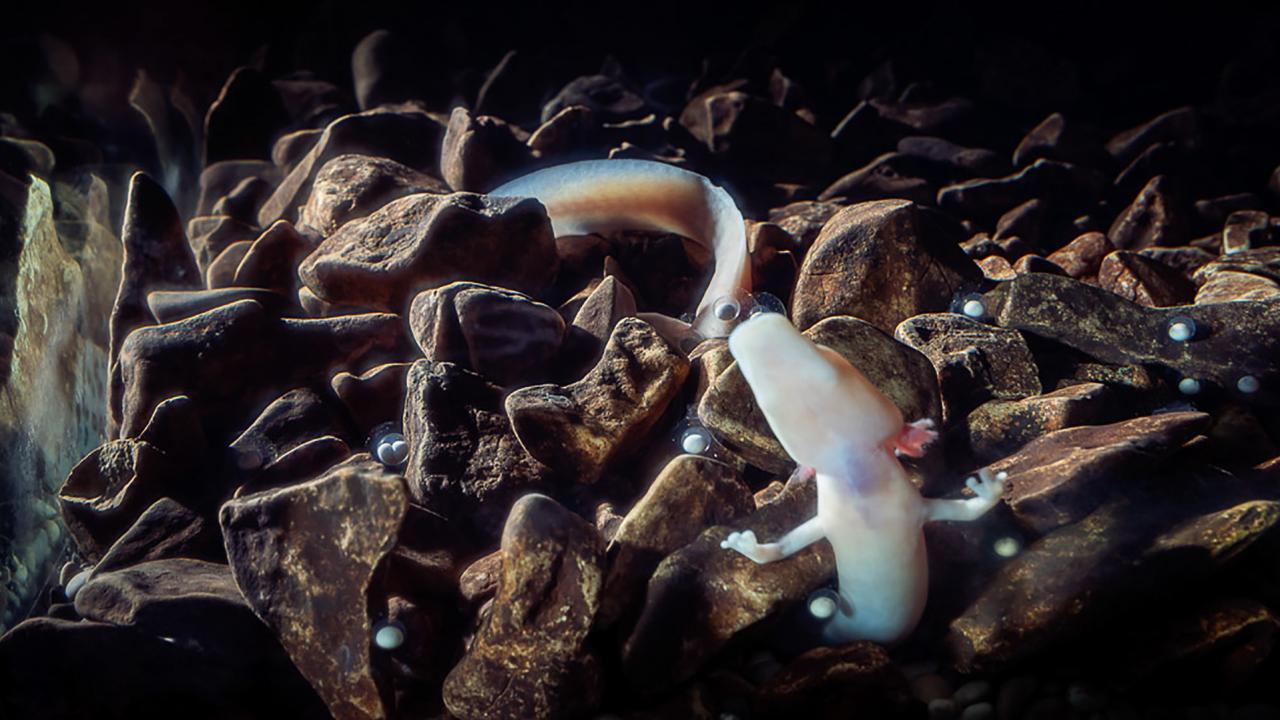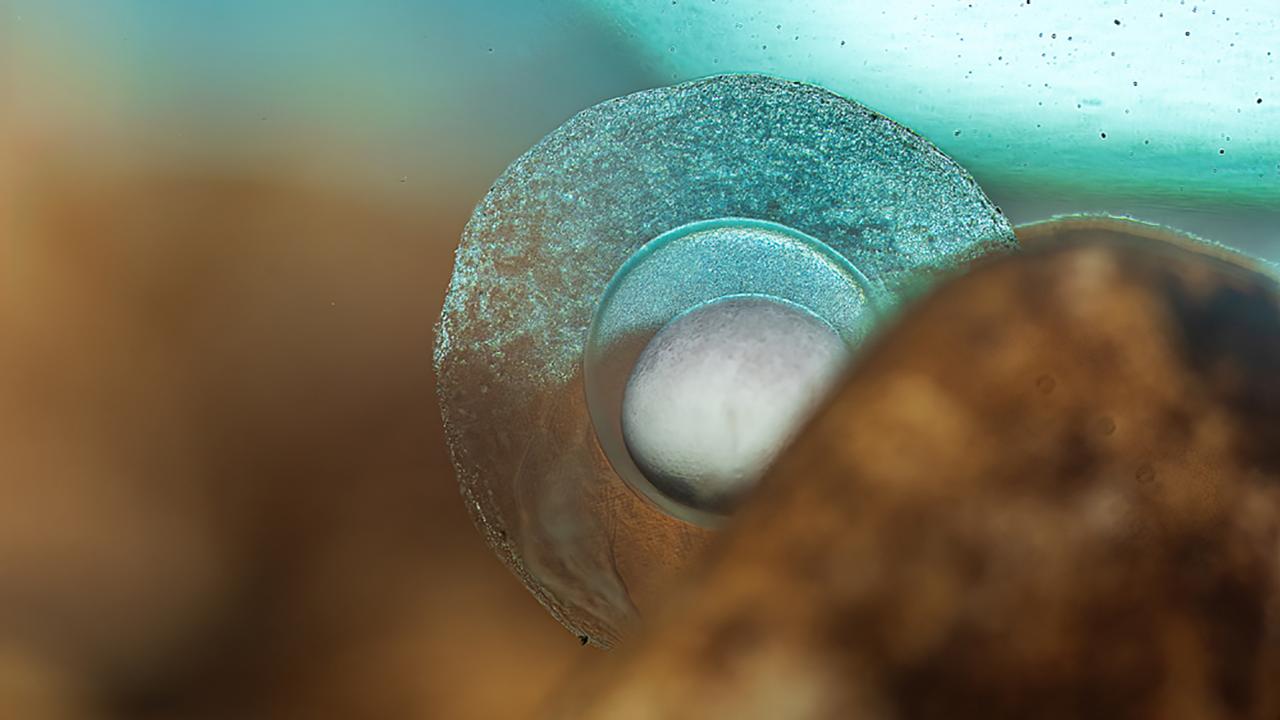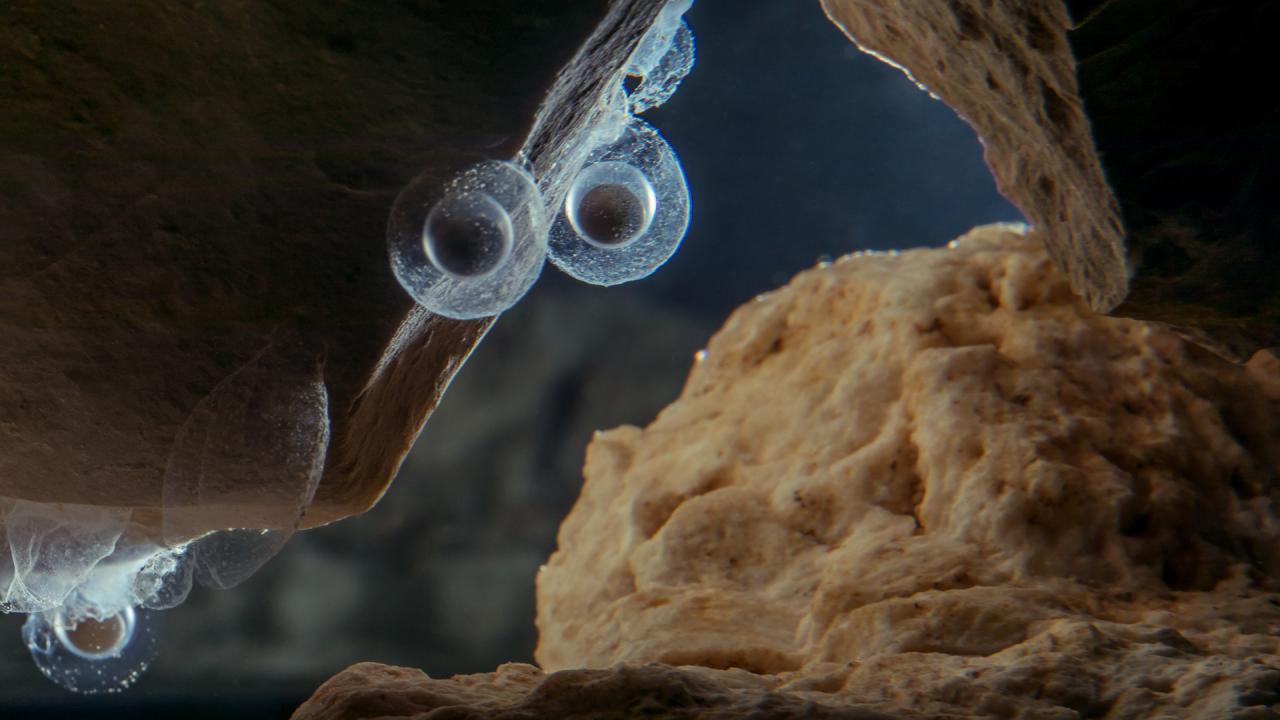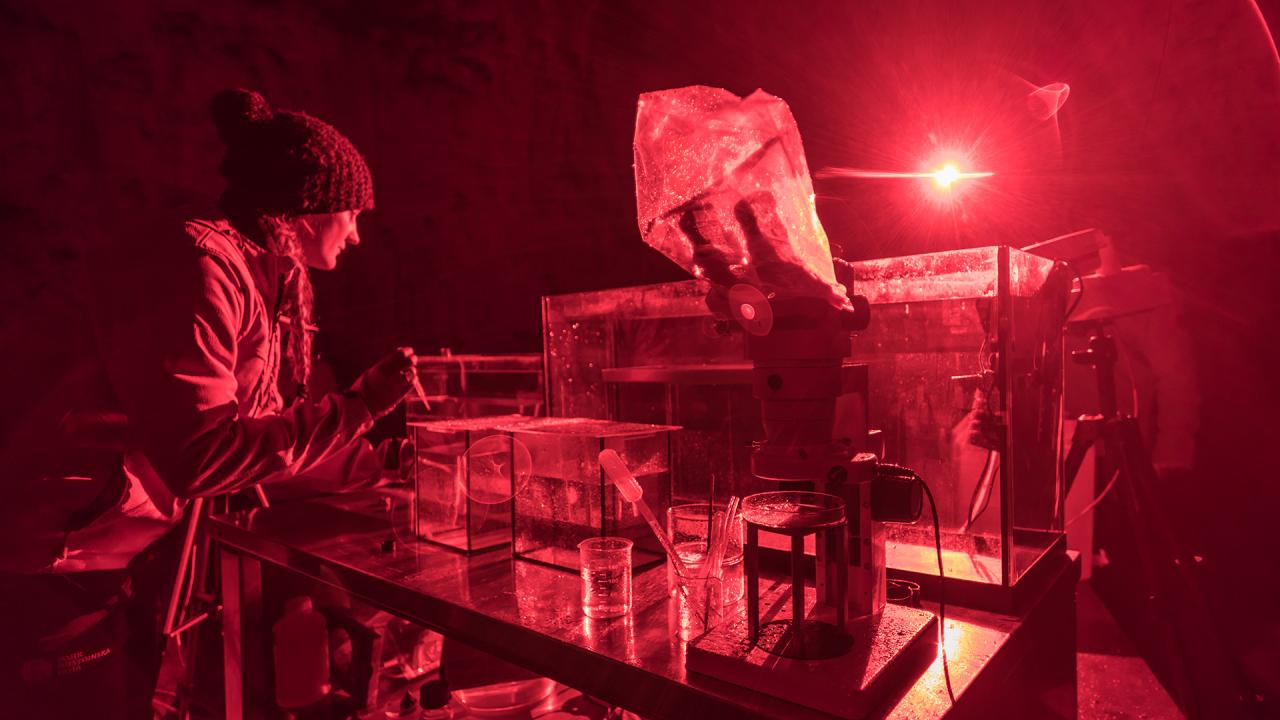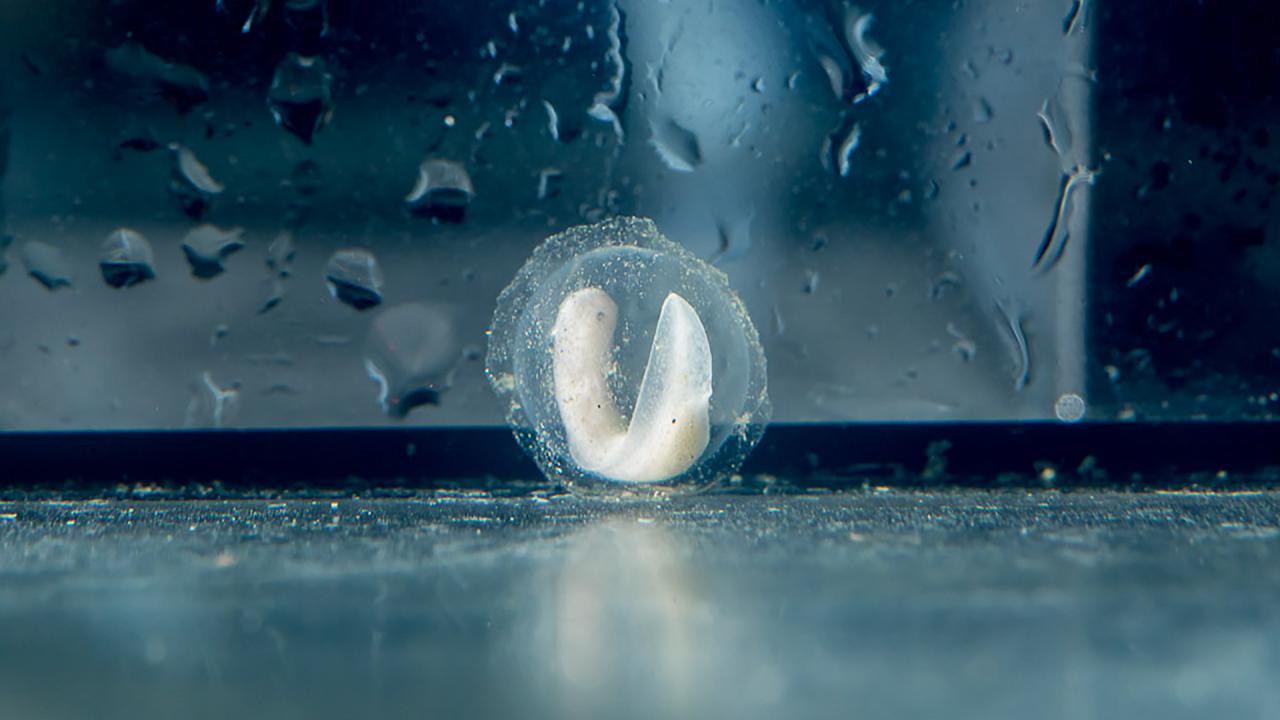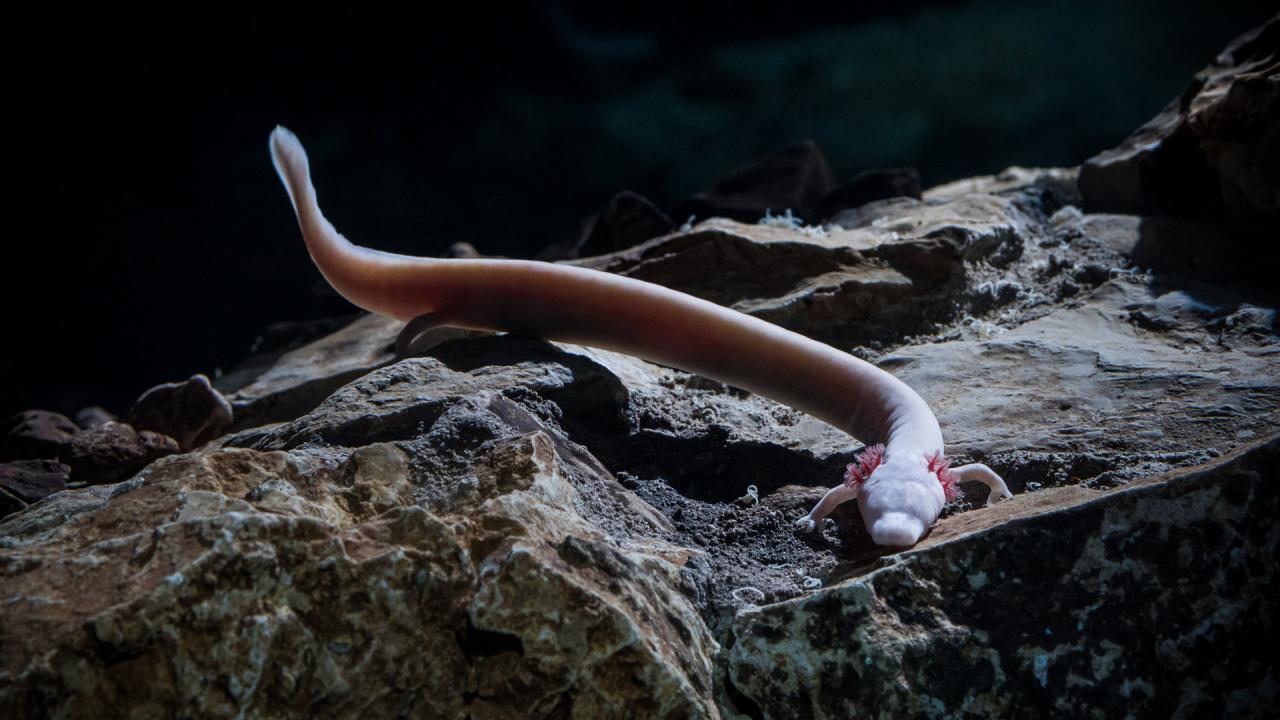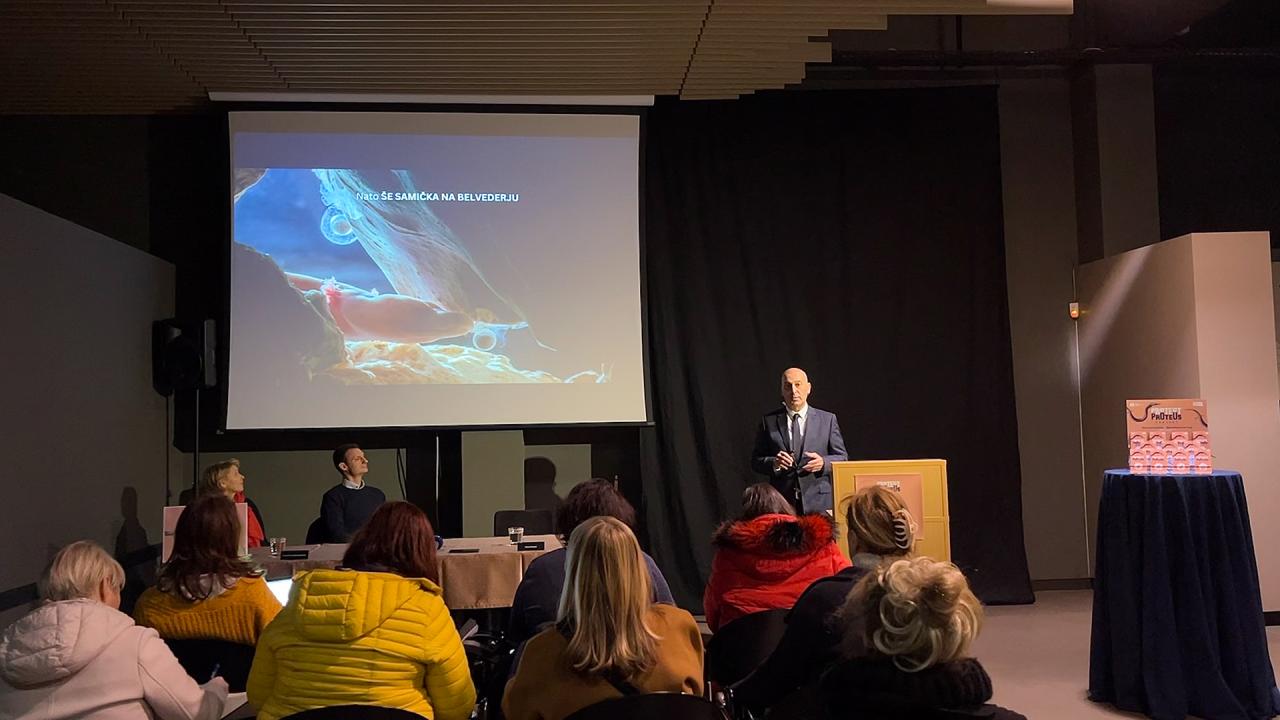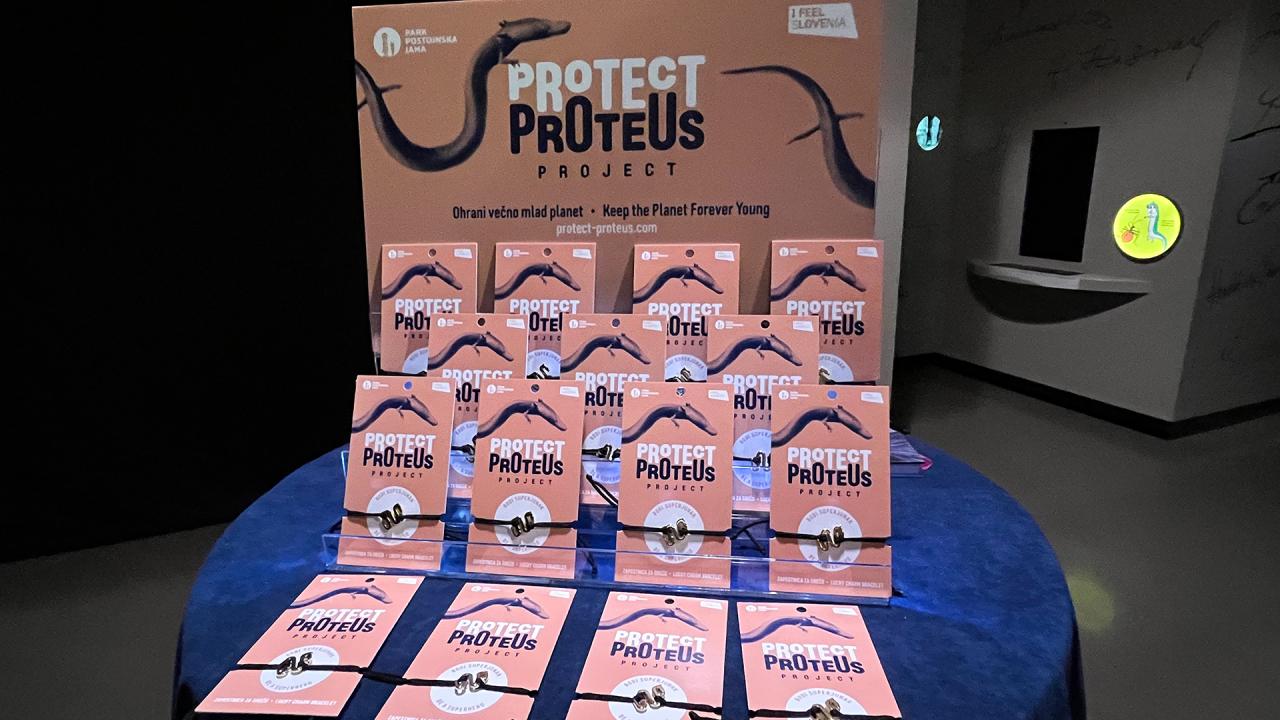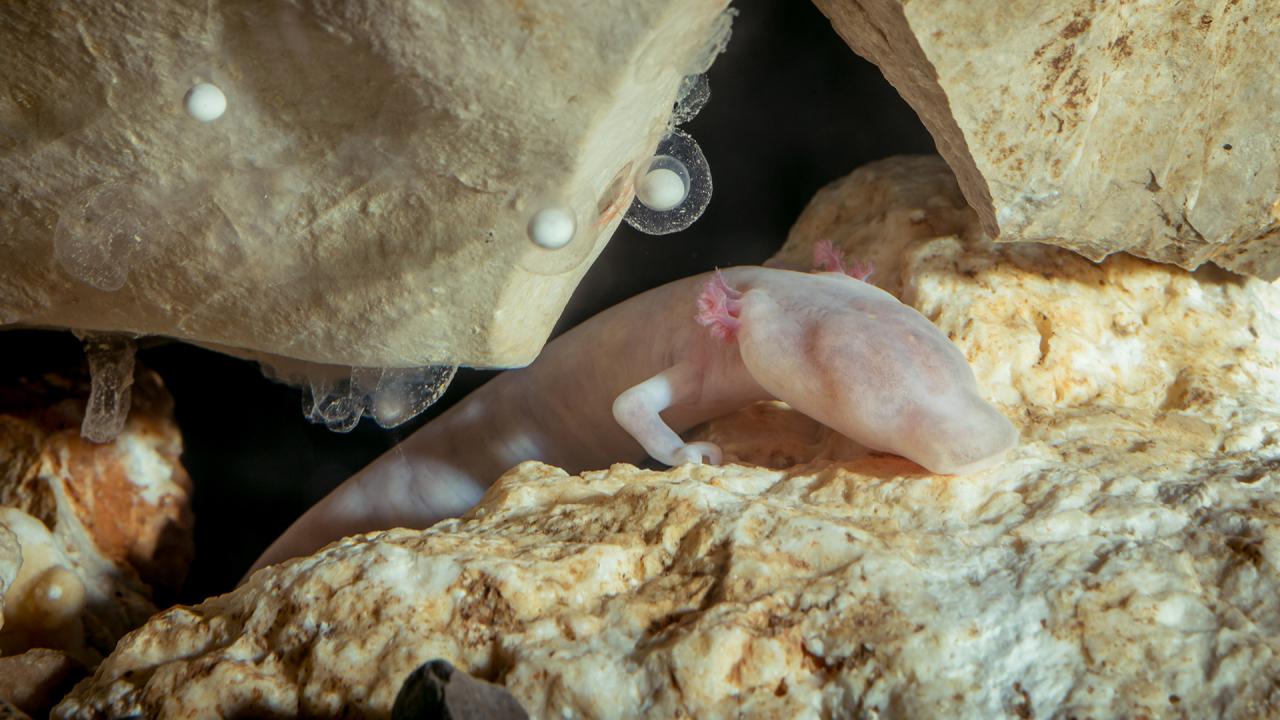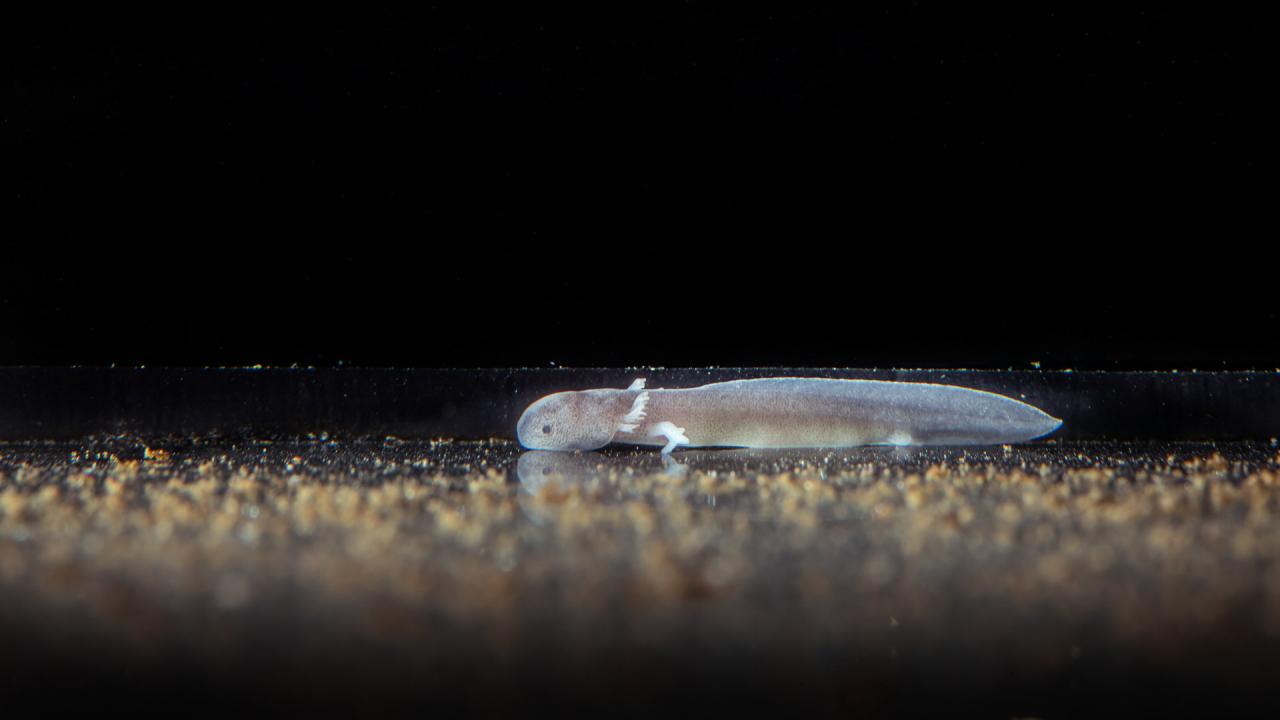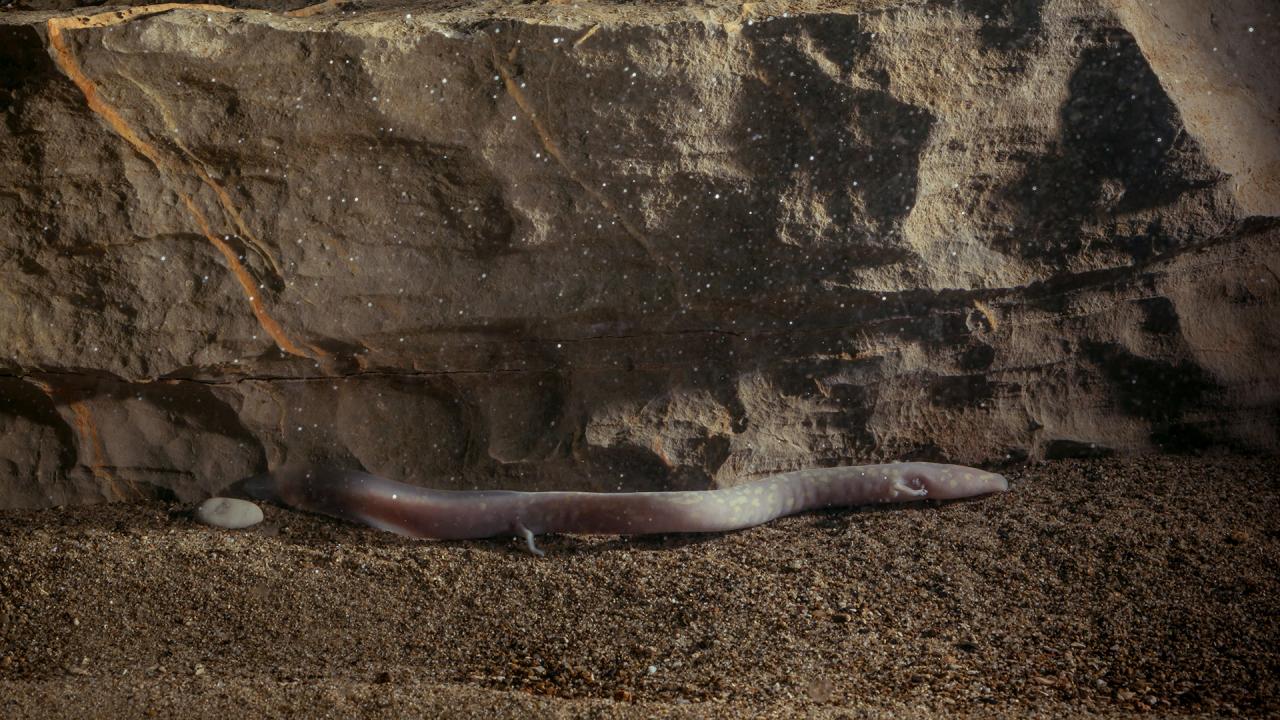Superheroes Protecting Baby Dragons
THE PROTECT PROTEUS PROJECT, one of the largest sustainability projects in Slovenia, has just been launched. This is a project aimed at ensuring the best possible living environment for the baby olms, also known as the ‘baby dragons’ from Postojna Cave, and raising public awareness about the importance of this protected and little-known animal species. Their reproduction process in nature had never been witnessed before, which made their hatching in the Postojna Cave aquarium all the more interesting. The olms are scientifically known as Proteus anguinus and are endemic to Slovenia and the Dinaric Karst.
PROTECT PROTEUS PROJECT
Marjan Batagelj, Managing Director of Postojna Cave, pointed out that, “With the baby dragons’ hatching in our aquarium in 2016 in front of the eyes of many cave visitors, nature has entrusted us with the role of their guardians, and our mission now is to make sure the olms are provided with a safe and healthy living environment”, adding, “After 2022, when a new brood of 36 new precious larvae joined the 21 hatchlings of 2016 and Postojna Cave was proclaimed the ‘House of Dragons’, we knew it was time to put words into action!”
Olms have become synonymous with Slovenia and clean water. By fighting for their existence, we are also fighting for the existence of clean drinking water.
KEEPING THE PLANET FOREVER YOUNG
The Protect Proteus Project has been launched to raise awareness about the special characteristics and the importance of olms, as well as the importance of preserving a clean environment and drinking water. We were quite shocked to find microplastics on the fragile jelly coat of an olm egg. We are now collecting funds with the aim of using them to ensure optimal living conditions for the baby olms, to educate the public about olms and for a long-term investment in the preservation of drinking water and a cleaner Karst environment. Since the underground world inhabited by olms is difficult to access and is characterised by challenging research conditions, it is difficult to obtain any data for the study of olms. For this reason, scientists are interested in our baby dragons and we cooperate closely with the Biotechnical Faculty in Ljubljana (since 2016).
A MYSTERY UNFOLDING
"We don’t know much about Proteus anguinus,” emphasised Prof. Rok Kostanjšek, PhD, from Biotechnical Faculty in Ljubljana, where the Proteus is studied. “We don't know where it lives, how many there are, we don't know where the natural population is maintained, when it becomes sexually mature or how to determine the gender." The scientists are trying to find all these answers with the great help of the head of the cave laboratory in Postojna Cave, Katja Dolenc Batagelj, and her team of biologists. “Since we’ve started our collaboration, we found out many interesting things about the ability of Proteus anguinus to starve, that they don’t have diabetes, that they have an extraordinary ability to regenerate, and we know much more about their longevity. And there’s one more very important thing: The Dinaric Karst and the planet is healthy, if olms can survive. As long as they are present, the system works the way it is supposed to. When olms are gone, it’ll probably be too late.”
POSTOJNA CAVE AS THE WORLD’S MOST SUCCESSFUL CAVE LABORATORY
Up until the historic 2016 milestone, when the very first baby olms hatched in Postojna Cave, this species had been largely unresearched. Prof. Kostanjšek explains, “This is when the head of the cave laboratory, Katja Dolenc Batagelj, with her team of biologists, who take care of olms 24/7, opened the door for us, offering us an opportunity for new research”. Both Prof. Kostanjšek and Asst. Prof. Lilijana Bizjak Mali, PhD, from the Biotechnical Faculty in Ljubljana, have emphasised the value and importance of the Postojna Cave lab. They were finally able to see an olm embryo for the first time in their lives and study it. “Thanks to the great passion, aspiration and hard work of our Postojna Cave team, the olms hatched successfully and we were able to research the egg laying process, olms’ development, as well as their regeneration and the healing of infections, we have detected and kept an eye on some extremely interesting pigmentless spots, which are in fact the olms ‘fingerprint’, and last but not least, we have witnessed a 74% reproductive success rate of the olms’ most recent brood in 2022.” Both Biotechnical Faculty representatives have expressed their gratitude for the fact that it was Postojna Cave and its appealing popular-science communication about the baby olms that have made sure the scientific findings have made it into the best-known global media, to every continent, and consequently to people’s hearts.
ANYONE CAN BE A SUPERHERO
Olms can live up to 100 years, and can survive without any food for as long as ten years. They have a heart rate of a mere two beats per minute and they stay forever young, i.e., they remain in the larval stage throughout their lives, and are able to regrow a limb. Thanks to all these ‘super powers’, olms are veritable superheroes.
But actually, everyone who decides to support the Protect Proteus Project is a superhero. You can become an ambassador or guardian of the olms by purchasing a Protect Proteus lucky charm bracelet – all the proceeds from the sold bracelets go into a special fund set up for this purpose and any other donations. What’s more, our project is also an incentive for partnerships with all the companies that share the same sustainable philosophy.
The launch of the Protect Proteus Project is accompanied by an exhibition titled the Birth of Baby Dragons, which is on view in front of the cave. It features the photos of various scenes showing olms and baby olms through all the development stages. You can see the virtual exhibition version here.
More about the project: https://www.postojnska-jama.eu/en/protect-proteus-project


 slovenščina
slovenščina Deutsch
Deutsch italiano
italiano Hrvatski
Hrvatski français
français español
español polski
polski čeština
čeština magyar
magyar Русский
Русский Nederlands
Nederlands Português
Português 한국어 [韓國語]
한국어 [韓國語] 中国的
中国的 日本語
日本語 עברית
עברית